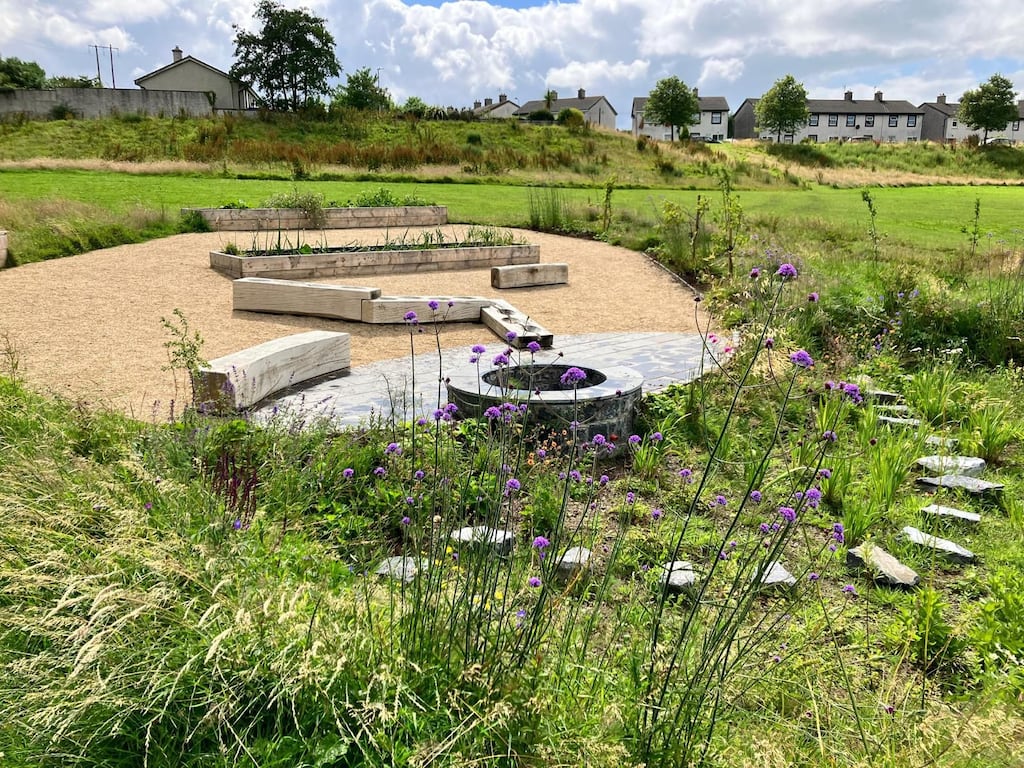“Some of this area used to be a wasteland,” says Mark McAndrew as he looks out across a “paradise garden” that has been created in a housing estate in Ballina, Co Mayo, by members of the community.
The Ripple Project in the Greenhills area of the town was a collaborative effort involving locals, experts from the University College Dublin (UCD) centre for Irish towns, and the Ballina Green Towns initiative.
It recently achieved Ireland’s first win in the New European Bauhaus Award in Brussels, chosen ahead of some 1,450 entries across the continent. The project was also commended at the Mary Robinson climate change conference in the town this week, where the focus was on how communities can be empowered to build a sustainable future.
Using a neglected green space the project created a climate-friendly amenity which includes a haven for wildlife, a tree nursery for local oaks, heritage fruit trees, vegetable beds, pollinator-friendly planting and a nature-based play area.
Protestant churches face a day of reckoning with North’s inquiry into mother and baby homes
Pat Leahy: Smart people still insist the truth of a patent absurdity – that Gerry Adams was never in the IRA
The top 25 women’s sporting moments of the year: 25-6 revealed with Mona McSharry, Rachael Blackmore and relay team featuring
Former Tory minister Steve Baker: ‘Ireland has been treated badly by the UK. It’s f**king shaming’
Participants in the project also slowed the flow of rainwater in order to remove sediment or litter before it reaches the river Brusna, a tributary of the Moy, which is noted for its stocks of salmon and trout.
Dr Sarah Cotterill, from UCD’s school of civil engineering, said the Ripple Project was fortunate from the outset, with Greenhills residents already making environmentally-friendly changes such as planting trees and attempting to improve the area’s biodiversity. While the impact of climate change will be felt by every community in Ireland, she said it was sometimes hard for people to see ways of making a difference.
“One of the issues with climate projects is sometimes you are preaching to the converted and one of the barriers to people getting involved in climate action projects is, for example, where people from less socio-economic advantaged backgrounds might have bigger concerns than thinking ‘how am I going to tackle this?’,” Dr Cotterill said.
She said a lot of the climate change narrative was around temperature increases and polar ice caps melting which was not going to affect Ireland in the short-term, so they focused on the impact of extreme rainfall as “we wanted to engage people with something they can see and which will affect their lives”.
Mr McAndrew, who was born in the Greenhills estate, said the project had been an opportunity to build on the work already done by locals to turn what was in part “a wasteland” into an amenity now enjoyed by all age groups. “This is an estate where not many people lock their doors. There is a community spirit here. People like having vegetables growing 10 minutes from their kitchen.”
Independent councillor Mark Duffy, who founded Ballina Green Towns with local architect Kevin Loftus, said the success of the Ripple Project showed the importance of community empowerment, with residents of the 200-house estate making the decisions about how to develop the amenity.
He said Ballina aimed to be Ireland’s greenest town and had a number of plans such as wind turbines in the river Moy and having a “10-minute town” where amenities were just a short cycle away.
Adele Mealey of Creative Ireland, which funded the project, said it was very much community-led, with the experts careful not to assume they knew what locals wanted. “They (residents) know this place and know what needed to change,” she told the climate change conference.





